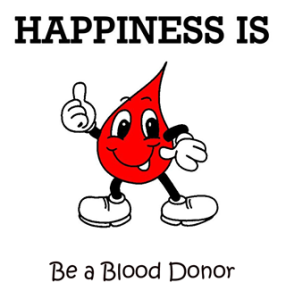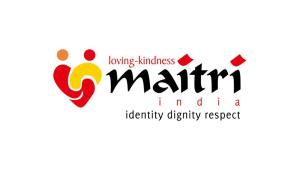India with the huge population base of close to 1.5 billion has faced a number of developmental challenges which require concerted effort from Government, Corporates or Business and Self or Individual. A harmonious handshake between all three of them often referred to as Civil Society.
In recent era India has seen rapid economic development with the growth of Industrialisation. How rightly did Justice A M Ahmadi remark at 31st Annual Convocation of Indian Institute of Management, Ahmedabad (1998): “economic development without human development leaves development incomplete. Development divorced from human culture aspects has been described as growth without soul.”
A nationwide poll in US by Cone Inc reveals that over 80 percent of Americans prefer doing business with companies that are founded on core principles of corporate and social responsibility.
Corporate Social Responsibility is more of a western concept. In India we are doing it from longer time but it was not coined with a name rather it was more of a belief that Industry was meant to serve man (as per Sri Jamshedji Tata).
Now, we the rapid adoption of western culture which we refer as Americanization, we have chosen every single problem in society and have mapped with same or near similar solution which is prevailing in western countries. Like for example, education, we have “Teach for India” on the same principles of “Teach for America” or for Environment protection, we have accepted extended form of GreenPeace.(Though I am not denying the fact that Indian organisations like Akshay Patra and Shulabh Shauchalaya are also existing to solve the major issues).
It is good for us as we are bringing more structures into the community and providing measurable solutions to these challenges which earlier was never measured as it was more of belief.
Infact these days, CSR has become a headache for corporates where they do not have choice to say NO as they do not want to be target of a powerful single issue campaign group. Ultimately they have to survive in the same community.
I see CSR as a vicious cycle:
A successful business vision require social vision as well and business ultimately helps itself to solve the societal problems.
For example, Hygiene is a social issue. Company like Dettol has and should spend on society to bring an acceptance of the fact that hand wash is important before consuming any food.
If the society realises the importance and ready to buy your product, viola, You have developed your customer who will inturn help company in their growth.(As per diagram above)
However, these days I have seen many corporates have CSR for namesake and their ultimate intention is to generate maximum profit from the society without returning back to the society. Such organisation will not sustain for 100 years for sure. If you want to be known like Tata, the only way is to be like Tata.
Types of Fit
As per Journal published by Menno D. T. de Jong1 • Mark van der Meer1, “ How Does It Fit? Exploring the Congruence Between Organizations and Their Corporate Social Responsibility (CSR) Activities”
Six intrinsic types of CSR fit emerged from the data. We will discuss them below.
- Products and Services
The first type of CSR fit involves the products or services for which the organization is responsible. In this case, the organization uses its products or services to do well. For example, reduced sales price of LED lights for a developing country by the consumer goods and healthcare instruments firm.
- Production Process
The second type of CSR fit involves the production process. It typically occurs when an organization installs a new machine, uses more sustainable energy sources, or starts using environment-friendly materials. For instance, the dairy firm replaced a machine with a new one. The old machine discharged salt water into the surface water of the nearby area. The new machine desalinates the water first before discharging it. As a result, the surface water will be less polluted.
- Environmental Impact
A third type of CSR fit relates to an organization’s impact on the environment. This type of fit occurs as an ends-level fit. Sustainability, energy saving, reuse, and waste management are keywords here. The office furniture company, for example, developed a policy of maximizing the use of recycled materials and minimizing the use of new and notreusable materials. The mail delivery firm heated the offices with CO2 neutral biogas, and leased cars with a lower CO2 emission. Not all environmentally friendly activities can be framed in terms of a CSR fit. For example, the printing house sponsored a campaign aimed at raising people’s awareness of the ‘‘plastic soup’’ in the oceans.
- Employees
The fourth type of CSR fit involves the employees of the organization. In this case, CSR activities are linked to the people working for the organization. For example, The dairy firm had an active policy of encouraging employees to do sports and eat healthily.Also, it involves in activities supporting charities because employees are volunteering for that specific charity organization. For instance, the IT company supports education for slum kids, because one or more of its employees volunteered for them.
- Suppliers
The fifth type of CSR fit involves a look beyond the organization itself; it focuses on the sustainability and social responsibility of the suppliers. For example, The consumer goods and healthcare instruments firm explicitly demanded the suppliers to comply with a set of rules and requirements concerning, for example, child labor and the use of hazardous materials. Suppliers were audited on a regular basis, and third parties were given the opportunity to complain about the suppliers.
- Geographical Location
The last type of CSR fit involves the region or the city where the organization is located. For example, a textile company, focused on regional activities. Its engagement exceeded the sponsoring of local initiatives—such as educating the young kids, clean water supply, cultural and sports events—but also supported more structural municipal initiatives to enhance the quality of life in the municipality.
With the study of above CSR fits where most of the Corporates tries to align CSR activities in any one or more of the six verticals, but what about those activities which are beyond these six verticals. For example, a textile company distributing LED bulbs to farmers which has no connection with the core business of the corporate or another example an IT company distributing clothes in slums which is again deem no fit in the above six verticals but the intention is to help the society.
I have another observation to share, with the increase in the realisation about the issues, now lot many so called Not for Profit organisations have emerged who want to solve the issues but is not organised enough. Like these days, it can easily be observed that corporates along with some NGO go to old age home to distribute food etc and then take lots of picture which corporate print on their brochures and employees post on Facebook or twitter to gain the social empathy. In this case CSR is inclining towards social status for both corporates and its employees. Is it worth it?
While, now we are now talking about quantification of actions to solve the critical issues of Society, I believe Government and Corporate should be aligned in solving the issue jointly and with a proper goal set.
Basically, in the diagram above everyone is trying to solve every issue in society and the result is poor for all as they are not focussed.
Case 1: It’s like a situation where one enthusiastic student took 15 courses in a single term and he end up “F” grade in all the subjects as he was not able to focus on every single subject and could not justice as he was occupied attending classes with very less time left for self study.
Case 2: Now, considering a better situation where an enthusiastic students wanted to choose 15 courses but his guide explained him the consequence and he chose only 7 subjects in that term. The student did exceptionally well in all the subjects with “A” grade as this time he was focussed and also was able to do justice with every subject by devoting his time.
In Case 2, let’s now replace student with Corporate and Guide by Government (Niti Aayog).
Hence, to conclude my writeup, I believe Government and Corporates goal should be aligned and both of them should work jointly to address the issue. For example to encourage the digital literacy, I believe IT companies can play best role here as they have both the experience and appropriate resources. If a dairy company jumps for digital literacy, I think again the CSR will reduce to photographs and brochures printing. No doubt, NGOs plays a major role as an interface to bridge both the Government and Corporate intention and activities and measuring the result collectively.
Hence, a marriage between Niti Ayog and Corporate Social Responsibility will play effective role in achieving the common goal of benefitting the society in all possible forms.
“Fir kya mai rishta pakka samjhoon?”.
I am eagerly waiting to hear both parties saying – Kabool hai, Kabool hai, Kabool hai.













